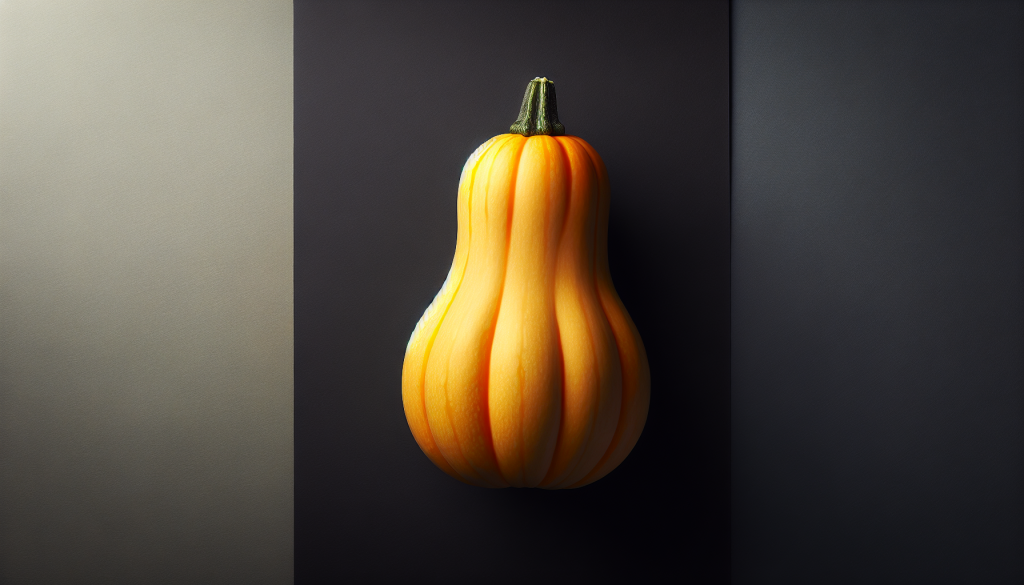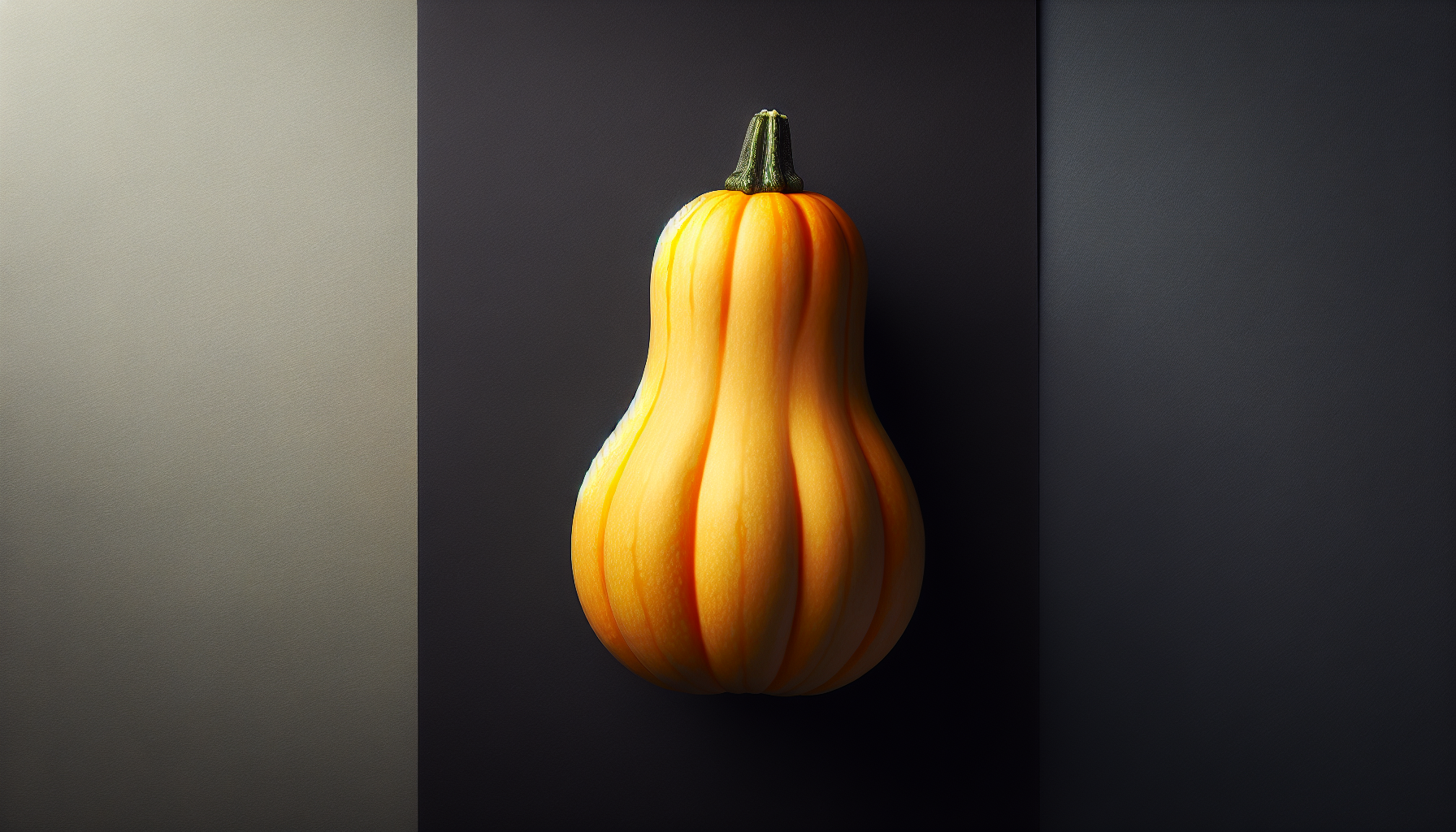You’re in luck! If you’re wondering how to freeze butternut squash and keep it fresh for longer periods of time, look no further. In this article, we’ll provide you with all the necessary steps and tips to easily freeze your butternut squash and enjoy its deliciousness whenever you please. Whether you’ve harvested an abundant crop from your vegetable garden or found a great deal on butternut squash at the market, freezing it is a wonderful way to preserve its flavor and texture. So let’s get started on your path to perfectly frozen butternut squash!
Preparing Butternut Squash for Freezing
When it comes to freezing butternut squash, proper preparation is key. By following these steps, you can ensure that your butternut squash stays fresh and delicious even after months in the freezer.
Selecting the Right Butternut Squash
Before you start freezing butternut squash, it’s important to choose the right squash. Look for a squash that is firm, with smooth skin and no soft spots or blemishes. A good butternut squash should feel heavy for its size, indicating that it’s full of moisture and flavor.
Washing and Peeling the Squash
Once you have selected your butternut squash, the next step is to wash and peel it. Begin by rinsing the squash under cool running water to remove any dirt or debris. Then, use a vegetable peeler or a sharp knife to carefully peel off the tough outer skin. Make sure to remove any green or white parts, as they can have a bitter taste.
Seeding and Cutting the Squash
After peeling the squash, it’s time to remove the seeds and cut it into your desired shape. To seed the squash, simply slice it in half lengthwise and scoop out the seeds using a spoon or your fingers. Once the seeds are removed, you can cut the squash into cubes, chunks, or slices, depending on how you plan to use it later.
Blanching the Squash
Blanching is an important step in the process of freezing butternut squash. It helps to preserve the flavor, color, and texture of the squash, and also helps to destroy enzymes that can cause it to spoil. There are two popular methods for blanching butternut squash: the boiling water method and the steam blanching method.
Blanching Butternut Squash
Blanching is a simple yet crucial step in the process of freezing butternut squash. It is important because it helps preserve the flavor, texture, and color of the squash, making it taste as fresh as possible when you’re ready to use it. Here are two methods you can use to blanch butternut squash:
Boiling Water Method
To blanch butternut squash using the boiling water method, start by bringing a large pot of water to a rolling boil. Carefully place the cut squash into the boiling water and let it cook for about 2-3 minutes. Be sure not to overcrowd the pot, as this can result in uneven blanching. After the allotted time, remove the squash with a slotted spoon and immediately transfer it to an ice water bath to stop the cooking process.
Steam Blanching Method
If you prefer an alternative to the boiling water method, you can also steam blanch your butternut squash. To do this, simply place the cut squash in a steamer basket or colander over boiling water. Cover and steam for about 3-4 minutes or until the squash is just tender. Once steamed, transfer the squash to an ice water bath to cool and halt the cooking process.
Blanching Time and Guidelines
Regardless of the method you choose, it’s important to blanch the butternut squash for the right amount of time. Generally, small cubes or slices should be blanched for about 2-3 minutes, while larger chunks may require 3-4 minutes. Keep in mind that blanching times may vary slightly based on the ripeness and size of the squash. After blanching, make sure to drain the squash thoroughly before proceeding to the next step.
Cooling and Packing
Once you’ve blanched your butternut squash, it’s time to cool it down and pack it for freezing. Proper cooling and packing techniques will help maintain the quality of the squash over time.
Cooling Blanched Squash
After blanching, it’s important to cool your butternut squash quickly to preserve its flavor and texture. To do this, transfer the blanched squash into a large bowl or basin filled with ice water. Let it sit in the ice water bath for the same amount of time it was blanched. This will cool the squash and stop the cooking process.
Packing Squash for Freezing
Once the blanched squash has been cooled, it’s time to pack it for freezing. There are a few different options for packing butternut squash, including using freezer bags or containers.
Using Freezer Bags
One popular method is to pack the cooled squash into freezer bags. Simply scoop the squash into the bags, leaving some room for expansion, and press out any excess air before sealing the bags. Make sure to label the bags with the date and contents before placing them in the freezer.
Using Containers
Another option is to use containers for packing your butternut squash. Choose airtight, freezer-safe containers and fill them with the cooled squash, leaving some space at the top for expansion. Seal the containers tightly and label them with the date and contents before placing them in the freezer.
Vacuum Sealing Option
For those looking for an extra level of protection against freezer burn, vacuum sealing is an option. This method removes all the air from the packaging, ensuring that the butternut squash stays fresh for an extended period. Follow the manufacturer’s instructions for vacuum sealing your butternut squash.

Freezing Butternut Squash
Now that you have properly cooled and packed your butternut squash, it’s time to freeze it. Freezing is the final step in the process and will help preserve the squash for months to come.
Using Freezer Bags
If you packed your butternut squash in freezer bags, place the bags flat in the freezer so that they freeze quickly and evenly. This will prevent the squash from sticking together and make it easier to remove individual portions when needed.
Using Containers
If you opted for using containers, make sure to place them in the freezer with enough space around them for air circulation. This will help promote even freezing and prevent any potential freezer burn.
Proper Labeling
No matter which method you choose, it is crucial to label your frozen squash containers or bags with the date and contents. This will ensure that you know how long the squash has been in the freezer and what it is when you’re ready to use it later.
Alternative Freezing Methods
While blanching and freezing cubed butternut squash is the most common method, there are a few alternative freezing methods you can try as well.
Freezing Cooked Squash
If you have already cooked your butternut squash, you can freeze it directly without blanching. Simply let it cool to room temperature, then package it in airtight containers or freezer bags. Make sure to remove as much air as possible before sealing the bags or containers to prevent freezer burn. Label them with the date and contents before freezing.
Pureeing and Freezing Squash
Another option is to puree the butternut squash before freezing it. To do this, cook the squash until tender, then remove the skin and seeds. Puree the flesh in a blender or food processor until smooth, then transfer it into freezer-safe containers or bags. Leave some space for expansion, seal tightly, and label with the date and contents before freezing.
Freezing Squash Seeds
If you don’t want to waste any part of the butternut squash, you can also freeze the seeds. After removing them from the squash, rinse and dry them thoroughly. Spread them out on a baking sheet and place them in the freezer until they are frozen solid. Transfer the frozen seeds into an airtight container and label it before putting it back into the freezer. These frozen seeds can be used for roasting or planting in the future.
Thawing and Using Frozen Squash
When you’re ready to use your frozen butternut squash, it’s important to thaw it properly to maintain its texture and flavor. Here are two methods for thawing frozen squash:
Thawing in the Refrigerator
The best way to thaw frozen butternut squash is to transfer it from the freezer to the refrigerator. Place the frozen squash in a container or on a plate to catch any liquid that may accumulate during the thawing process. Allow it to thaw in the refrigerator for 24-48 hours, depending on the size of the frozen squash pieces. Once thawed, the squash is ready to be used in your favorite recipes.
Thawing in Cold Water
If you’re short on time, you can also thaw frozen squash in cold water. Fill a large bowl or basin with cold water and submerge the sealed bag or container of frozen squash. Make sure to keep the squash tightly sealed to prevent water from getting in. Change the water every 30 minutes to help speed up the thawing process. It should take about 2-3 hours for the squash to fully thaw using this method.
Using Frozen Squash in Recipes
Once your butternut squash is thawed, it can be used in a variety of recipes. Frozen butternut squash is great in soups, stews, roasted vegetable medleys, pasta dishes, and even desserts. The flavor and texture of the squash will remain intact, allowing you to enjoy the taste of fresh butternut squash even in the off-season.
Storage and Shelf Life
Proper storage is important to maintain the quality of your frozen butternut squash. Follow these guidelines to ensure the best results.
Optimal Storage Conditions
For the best quality, store your frozen butternut squash at 0°F (-18°C) or below. Maintaining a consistent freezer temperature is crucial to prevent freezer burn and maintain the flavor and texture of the squash.
Shelf Life of Frozen Butternut Squash
When stored properly, frozen butternut squash can be kept for up to 12 months. However, for the best quality and flavor, it is recommended to use it within 6-9 months. After this time, the squash may start to lose some of its flavor and texture.
Tips and Considerations
Here are some additional tips and considerations to keep in mind when freezing butternut squash:
Using High-Quality Squash
To ensure the best results, start with high-quality butternut squash. Choose squash that is firm, with smooth skin and no signs of spoilage or damage. High-quality squash will freeze better and retain its flavor and texture.
Avoiding Overripe Squash
It’s important to freeze butternut squash before it becomes overripe. Overripe squash may have a mushy texture and may not freeze well. Look for squash that still feels firm and has a vibrant color.
Using Frozen Squash within 12 Months
While frozen butternut squash can be kept for up to 12 months, it is recommended to use it within 6-9 months for the best quality and flavor.
Maintaining Proper Freezer Temperatures
Make sure to regularly check and maintain the temperature of your freezer. Fluctuating temperatures can affect the quality of the frozen squash and may lead to freezer burn.
Inspecting Frozen Squash before Use
Before using frozen butternut squash, inspect it for any signs of freezer burn or spoilage. Freezer burn appears as white or grayish patches on the surface of the squash and can affect the flavor and texture. If you notice any signs of freezer burn or spoilage, it’s best to discard the squash.
FAQs
Can I freeze raw butternut squash?
While it is possible to freeze raw butternut squash without blanching, it is not recommended. Blanching helps preserve the flavor, color, and texture of the squash and also destroys enzymes that can cause spoilage over time.
Can I freeze cooked butternut squash soup?
Yes, you can freeze cooked butternut squash soup. Let it cool to room temperature, then transfer it into freezer-safe containers or bags. Seal tightly, label with the date and contents, and freeze for up to 3 months.
Can I freeze cubed butternut squash?
Yes, cubed butternut squash can be frozen. Blanch the cubes, cool them down, pack them into containers or bags, and freeze. Cubes are great for quick and easy use in recipes.
Conclusion
Freezing butternut squash is a great way to enjoy this delicious and nutritious vegetable year-round. By following the steps outlined in this article, you can ensure that your butternut squash stays fresh, flavorful, and ready to use whenever you’re in the mood for a taste of autumn. Whether you’re dreaming of butternut squash soup, roasted vegetables, or tasty side dishes, having frozen butternut squash on hand makes it easy to enjoy your favorite recipes at any time. So go ahead, stock up on butternut squash when it’s in season, and freeze it using the methods described here. Your future self will thank you for it!

